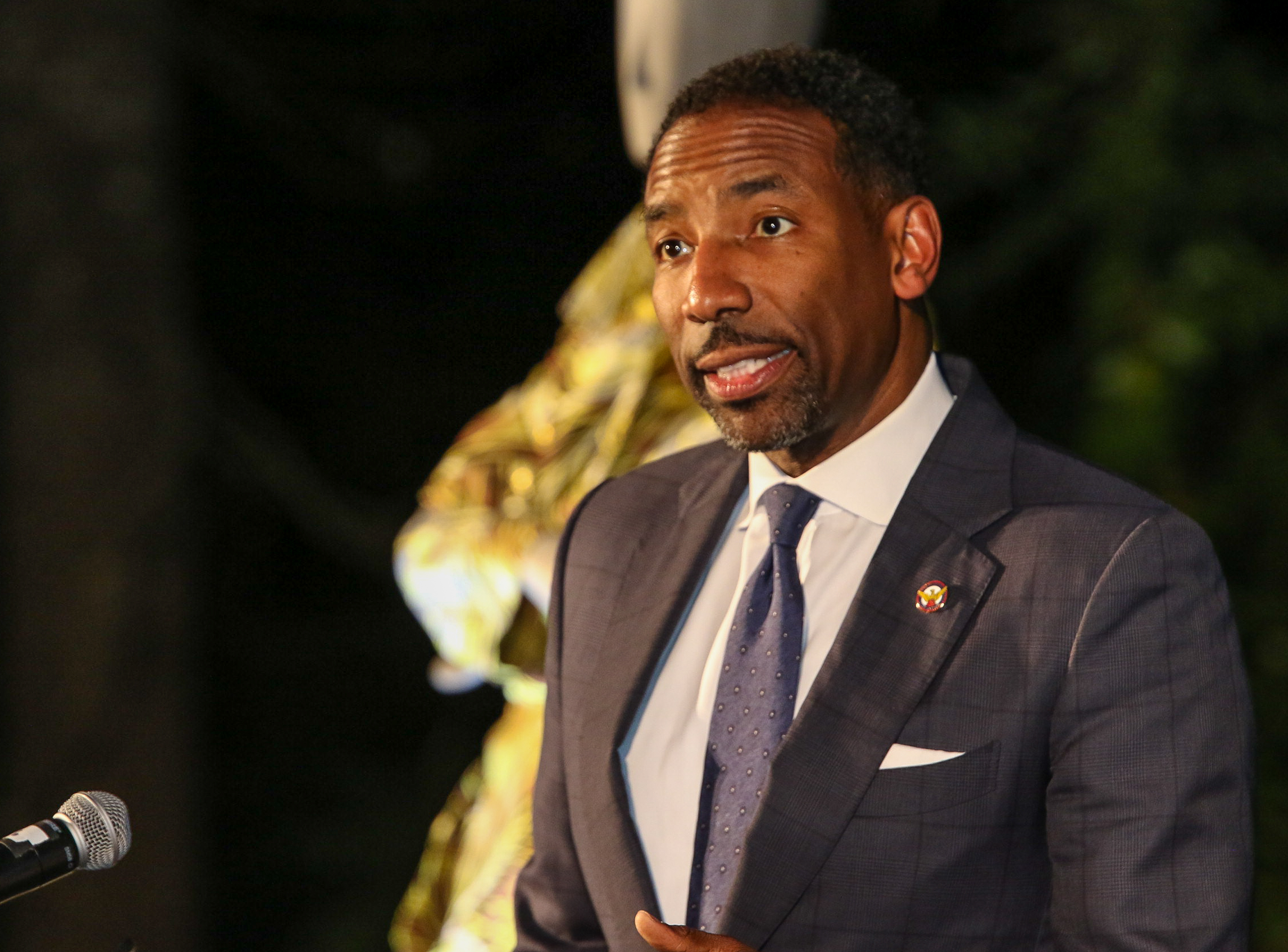In 1986, the best-selling Brazilian author Paulo Coelho walked the ancient religious road from the French border to the Cathedral of Santiago de Compostela in northwestern Spain. In those days, he recalls with a smile, perhaps 450 people made the famous pilgrimage each year. Today, that many do it daily. Some 100,000 pilgrims registered with the Roman Catholic Church in Santiago last year, after trekking along the 764-kilometer route—and European officials believe three or four times as many completed all or part of the journey but never formally presented themselves to be counted.
This summer, the numbers are expected to be even higher. Indeed, during the peak months of July and August the sinuous tracks through the Pyrenees (where an English pilgrim died of the cold earlier this month) and the rocky trails along the hillsides of Galicia that are the Camino de Santiago—or "The Way of Saint James," as it is called in English—will at times resemble a carnival boardwalk as much as a high road to the holy. The pilgrims will come in all sizes and shapes, from every compass point on the globe. Some will walk or ride bicycles; others will go by horseback or roll along in wheelchairs. A few walk the route's entire length, others just a short portion. Whatever the measure of their ardor, all are part of a fast-growing global phenomenon, a new era of pilgrimage that is transforming the way many people worship and the way they see themselves.
Pilgrimages have been around for millennia and have always been voyages of self-discovery. Each is "a transformative journey to a sacred center," says Phil Cousineau, author of "The Art of Pilgrimage." That they should suddenly be back in vogue speaks to the dawning of a new spirituality, at least as folks like Coelho see it. ''This road to Santiago was sleeping these past 400 years," he says. ''And then, all of a sudden, it awoke, spontaneously." Coelho's own writings might have something to do with that. Inspired by his personal spiritual and mystical experiences, his books ''The Pilgrimage" and ''The Alchemist" have sold tens of millions of copies in scores of languages. ''People are going back to real values: to walk, learn how to live a simple life, make contact with people, don't carry too much luggage. These are good metaphors for life," he says. ''Keep Santiago"—that is, your symbolic or literal destination—''in mind, but enjoy the road."
So it is elsewhere in the world these days, as traditional pilgrimages of many faiths draw ever-increasing throngs—many tens of millions of people a year. New pilgrimage routes are opened, old ones revived, and the "journey of faith" is becoming increasingly important not only to the pious but to people unsure what they believe, or whether they believe at all. Some of these epic journeys are well known. More than 2 million Muslims made the annual hajj to Mecca in December, 300,000 more than a decade before, and the throngs would be more enormous still if the Saudi government could accommodate them. The most recent pilgrimage by Hindus to the banks of the Ganges at Allahabad drew tens of millions in January. Impossible to count accurately, the crowds were so vast they were easily visible from outer space. Pilgrimages are an integral part of the Buddhist experience, as the Dalai Lama writes in an accompanying essay.
But it's in the West that such journeys, seen by many as a relic of the Middle Ages, are having a massive renaissance, and the phenomenon is most striking in Europe. While churches are closing in many corners of the continent, growing numbers of pilgrims are on the march. Many are young, independent-minded and skeptical of traditional religious institutions. Others who might not have the time or desire to fill the pews on Sunday nonetheless seek out the collective exaltation to be found among the masses suffering, hoping and praying by the millions at such shrines as Lourdes in France or Fatima in Portugal. And for many, very possibly most, the greatest attraction is in the journey itself. "Some are doing it because they are tourists, of course, and some are doing it because they like the physical challenge," says Edward Condry, 53, an Anglican priest and the canon treasurer of Canterbury Cathedral. But whatever the motive at the beginning, he adds, many feel a sense of spiritual awakening by the end.
Having walked several portions of the road to Santiago over the years, Condry is now leading a group of more than 30 bicyclists ages 16 to 64 who are training to ride from Canterbury to Rome in August on the ancient Via Francigena. In 16 days they'll cover 1,920 kilometers of restored trails and modern roads that pass through Champagne and Tuscany. "It makes it feel like you're going through this great party all over Europe," he says, echoing Coelho's "enjoy the road." Yet the implications of these pilgrimages are both vast and complex, tied as they inevitably are in Europe not only to issues of religion and spirituality but to histories of nationalism and the politics of identity. That the Crusades began as journeys of faith a thousand years ago does not mean that the new pilgrimages must fuel new clashes between Christendom and Islam. But the memory is there. In the recent past, pilgrims making their way to the Virgin of Czestochowa in Poland and the Hill of Crosses in Lithuania played a critical role preserving nationalist identities that defied the Soviet empire.
Today, pilgrimage routes that date back millennia and run thousands of kilometers across international borders are being revived by both church and state not only so people can enjoy the road but quite consciously to assert the identity of a united Europe that, historically, is Christian. Since 1987, dozens of ''cultural itineraries" have been designated formally by the Council of Europe, an organization of 46 countries founded in 1949 to promote unity. Once so anointed, the provinces and towns and villages along the itineraries seek funding from their governments and the European Union for development projects. There is one itinerary for the Muslim heritage, and one for the Jewish—but half a dozen are organized around the peregrinations of Christians and their saints.
The Catholic Church is building on this resurgent continental consciousness. ''There is a famous saying by Goethe: Europe was born in pilgrimage, and its mother tongue is Christianity," says Father Cesare Atuire, head of the Opera Romana Pellegrinaggi, which serves as the Vatican travel agency and turns the new spirit of religious journeys into practical expeditions. In line with the emphasis that Pope Benedict XVI has put on consolidating the Catholic faith in a skeptical and apathetic Europe, the map Atuire has of pilgrimage routes now being used or about to be revived looks like a lace mantilla covering the continent. But the church's interest in itineraries of faith also stretches far beyond.
Under Pope John Paul II, who was ''the greatest pilgrim of the 20th century, if not all time," says Atuire, the Vatican put a new emphasis on the power of the journey itself and the creation of ''a community of movement." This was something Islam, Hinduism and Buddhism never lost, but that the Christian church in the secular West failed to nurture. In the minds of many Europeans and Americans, Atuire explains, pilgrimages were seen as an exercise ''for the simple folk." And among Protestants, even in the churchgoing United States, there was long-standing skepticism about the very idea of pilgrimage, as though it were vaguely unsavory—an effort to bargain with God for indulgences. But what Atuire calls ''that experience of believing and walking together" is different. It is a voyage of discovery.
In 1984, John Paul II initiated World Youth Day, a pilgrimage that now takes place every three years. The destination changes: in 2005, it was held in Cologne, Germany; next year it will be in Sydney. But the destination is less important than the fact that multitudes of believers, many of them young people, converge in one place at one time after journeys of hundreds or even thousands of kilometers that they very likely will remember all their lives.
Pilgrimages large and small are being used to push outward the boundaries of the church's influence. For more than a year now, Father Atuire, who is originally from Ghana, has been planning for a group of perhaps two dozen pilgrims to make their way through the Libyan desert and across the border of Sudan to the city of El Obeid, in the province of Darfur. Relics of Josephine Bakhita, a former slave who became a nun in Italy and later a saint, are there. In a country ruled by an Islamic regime, in a province riven by war that some call a genocide, this is replete with symbolism. The route would be the same taken in the past by slaves and today by African emigrants desperate to make their way to Europe for work. ''The symbol we have is the cross—not as a crusade, but as an instrument of human liberty," says Atuire. If the Sudanese government can be persuaded, and the requisite permissions granted, he hopes to make the journey at Christmas this year.
Other pilgrims, in much greater numbers, will be making their way just then to Jerusalem and Bethlehem, now walled off by the enormous barrier the Israeli government has erected to keep suicide bombers from attacking its population. The wall stands as an all-too-concrete symbol that one of the greatest sites of religious pilgrimage—for Christians, Muslim and Jews—remains bitterly divided and fraught with danger. Yet there are groups that are trying to break through the hate and fear, precisely in the new spirit of pilgrimage. An organization called Pathway Circle carries out alternative spiritual journeys on foot to various sites around the country, with Muslims, Jews and Christians walking together.
In a real sense, many of those who make such trips, and those who organize them, hope they can change the world. But the process is not simple. ''To walk together is not easy, it's hard," says Bishop Mario de Gasperín Gasperín of Querétaro, a city in Mexico that is the starting point each July for a two-week procession to the Virgin of Guadalupe. "It's a school of caring for society. With the pilgrimage everyone feels like brothers."
It is precisely the way such journeys promote feelings of solidarity while stimulating solitary meditation that attracts many of the new pilgrims, including those who believe that they have no faith—a point that the Dalai Lama so eloquently emphasizes. Statistics kept by the Archdiocese of Santiago de Compostela show that more than half say they make the trip for ''religious and other reasons," as opposed to a minority who say simply ''religious." Almost 10 percent come for no religious reason at all, even as they hike the trail taking them to a cathedral where relics of Saint James, one of the apostles of Christ, are said to lie.
Modern pilgrims traveling the holy roads of the past, according to various studies and books about the Camino de Santiago, have reached turning points in their lives and are looking for a new direction. When Condry walks the Camino he's struck by how many of those he meets seem to be recently retired. ''They're 60 to 65 years old, and they're not carrying much," he says. "They've got a mobile phone and a credit card: the phone to tell the children to feed the cats and the card to pay the way." In the end, perhaps, it's only such trappings that have changed down the ages.
Uncommon Knowledge
Newsweek is committed to challenging conventional wisdom and finding connections in the search for common ground.
Newsweek is committed to challenging conventional wisdom and finding connections in the search for common ground.





